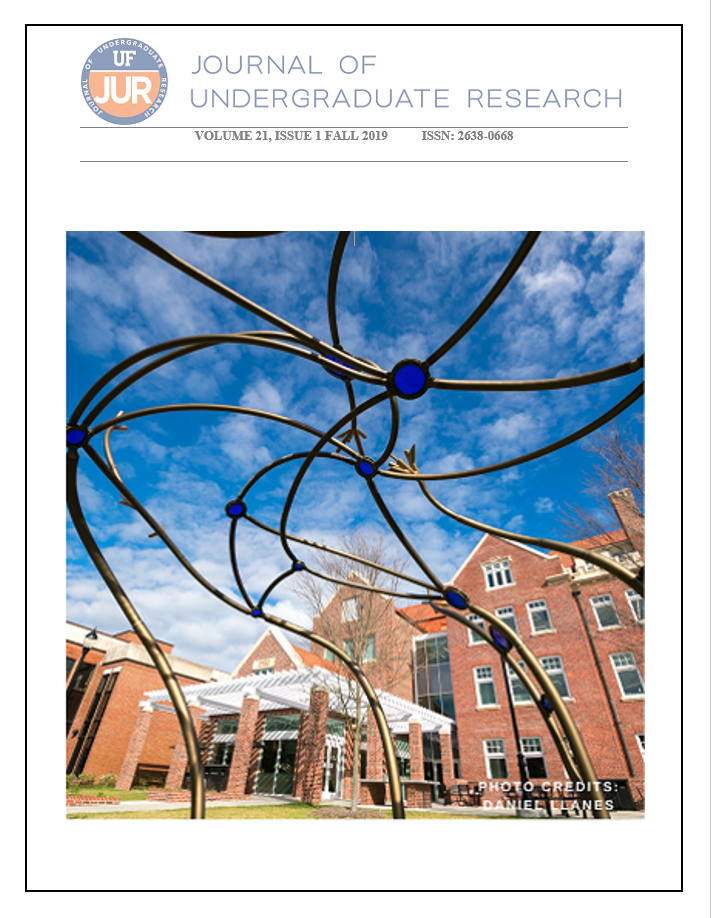St. George in Legend and Verse
DOI:
https://doi.org/10.32473/ufjur.v21i1.108036Keywords:
St. George, Reichenau, Hatto I, Georgslied, cult of the saints, relics, undergraduate researchAbstract
This paper investigates the emergence of the cultus of a medieval saint, St. George of Cappadocia, and correlates the production of legend with variations of the saint’s passio. It then considers the form of relics in relation to the narrative of their translationes. This is accomplished by exploring the political context in which they were translated by Archbishop Hatto of Mainz and the Holy Roman Emperor. It concludes with an exploration of the variations on George’s cultus on the Reichenau monastic center and presents an updated English translation of the late ninth or tenth century Georgslied.
Metrics
References
——— . (n.d.) MS Codex Palatini Germanici lat. 52. 200v-201v. Universitätsbibliothek Heidelberg. Retrieved from https://digi.ub.uni-heidelberg.de/diglit/cpl52/0438.
Davids, A. (1995). The Empress Theophano: Byzantium and the West at the Turn of the First Millenium. Cambridge: Cambridge University Press.
Delehaye, H. (1962). The Legends of the Saints. (D. Attwater, Trans.). New York, NY: Fordham University Press.
Droysen, J.G., Andrew, E.B., Krüger, H., & Buckle, H.T. (1893). Outline of the Principles of History (Grundriss der Historik). Boston: Ginn & Company.
Duchesne. (Ed.). (2007) The Lives of the Eighth-Century Popes. (Davis, Trans.). Liverpool: Liverpool University Press.
Ewig, E. (1964). Die Verehrung orientalischer Heiliger im spätrömischen Gallien und im Merowingerreich. Festschrift Percy Ernst Schramm Zu Seinem Siebzigsten Geburtstag Von Schülern Und Freunden Zugeeignet, 1, 385-400.
Fuhrmann, H. (1970). Der angebliche Brief des Erzbischofs Hatto von Mainz an Papst Johannes IX. Mitteilungen des Instituts für Österreichische Geschichtsforschung, 78, 51-62.
Haubrichs, W. (1979). Georgslied und Georgslegende: Text und Rekonstruktion. Konigstein/Ts.: Scriptor.
Haubrichs, W. (1993). St. Georg auf der frühmittelalterlichen Reichenau. Hagiographie, Hymnographie, Liturgie, und Reliquienkult. Herrschaft,
Kirche, Kultur. Beiträge zur Geschichte des Mittelalters. Festschrift für Friedrich Prinz zu seinem 65. Geburtstag, Monographien zur Geschichte des Mittelalters 37, 505-537. Stuttgart: Hiersemann.
Haubrichs, W. (1995). Zur Rezeption der Georgslegende und des althochdeutschen Georgsliedes. Deutsche Literatur und Sprache von 1050-1200: Festschrift für Ursula Hennig zum 65. Geburtstag, 71-92.
Klaniczay, G. (2002). Holy Rulers and Blessed Princesses: Dynastic Cults in Medieval Central Europe Cambridge: Cambridge University Press.
Krumbacher, K. (1980). Der Heilige Georg in der griechischen Uberlieferung. München: Universitätsbibliothek München.
Maskarinec, M. (2015). Building Rome Saint by Saint: Sanctity from Abroad at Home in the City (6th-9th Century). (Doctoral dissertation). Retrieved from University of California Open Access Publications database.
Maskarinec, M. (2018). City of Saints: Rebuilding Rome in the Early Middle Ages. Philadelphia: University of Pennsylvania Press.
Regino and Adalbert. (2009). History and Politics in Late Carolingian and Ottonian Europe: The Chronicle of Regino of Prüm and Adalbert of Magdeburg. S. MacLean. (Ed.). Manchester: Manchester University Press.
Reuter, T. (1991). Germany in the Early Middle Ages, c. 800-1056. London: Longman.
Reuter, T. (Trans.). (1994). The Annals of Fulda. Manchester: Manchester University Press.
Voorwinden, N. (1992). Die bedeutung der Philologie für die Literaturwissenschaft, am Bespiel des althochdeutschen Georgsliedes. Neophilologues, 76, 569-585.
White, M. (2016). Military Saints in Byzantium and Rus, 900-1200. Cambridge: Cambridge University Press.
Wickham, C. (2009). Early Medieval Italy: Central Power and Local Society, 400-1000. Ann Arbor: University of Michigan Press.
Zettler, A. (1989). Die spätkarolingische Krypta von St. Georg in Reichenau-Oberzell. Denkmalpflege in Baden-Württemberg–Nachrichtenblatt der Landesdenkmalpflege, 18(2), 97-105.
Downloads
Published
Issue
Section
License
Some journals stipulate that submitted articles cannot be under consideration for publication or published in another journal. The student-author and mentor have the option of determining which journal the paper will be submitted to first. UF JUR accepts papers that have been published in other journals or might be published in the future. It is the responsibility of the student-author and mentor to determine whether another journal will accept a paper that has been published in UF JUR.

